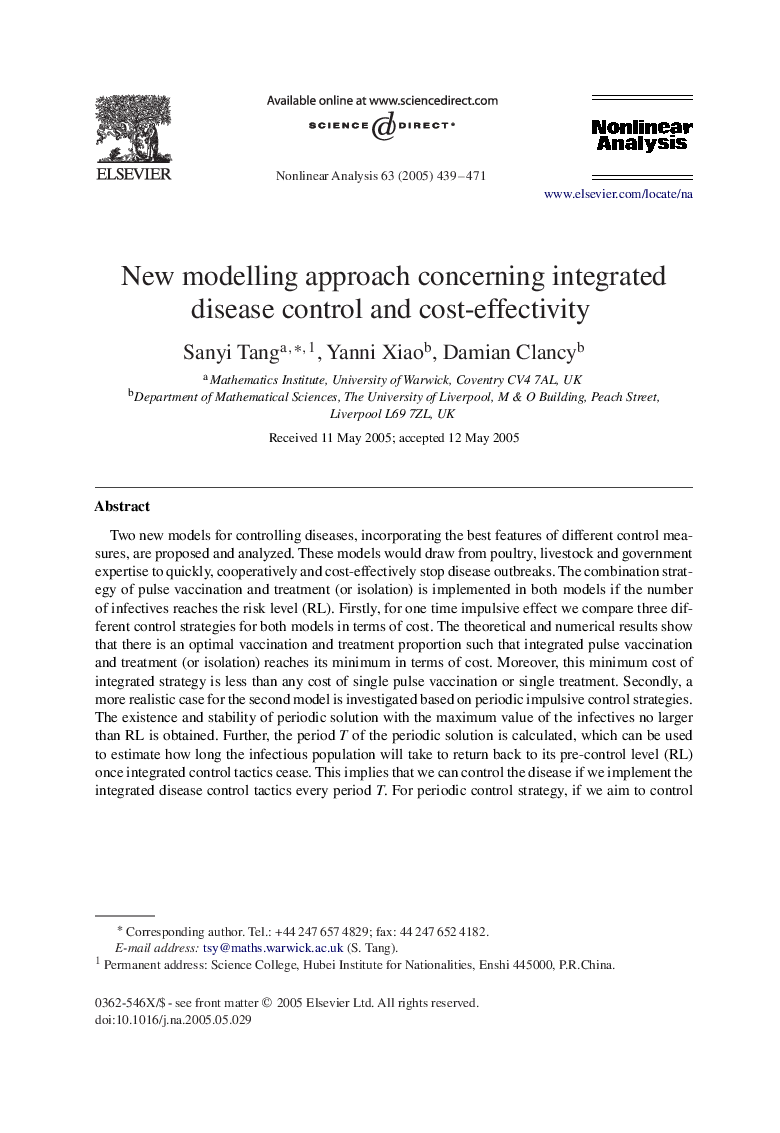| Article ID | Journal | Published Year | Pages | File Type |
|---|---|---|---|---|
| 10426981 | Nonlinear Analysis: Theory, Methods & Applications | 2005 | 33 Pages |
Abstract
Two new models for controlling diseases, incorporating the best features of different control measures, are proposed and analyzed. These models would draw from poultry, livestock and government expertise to quickly, cooperatively and cost-effectively stop disease outbreaks. The combination strategy of pulse vaccination and treatment (or isolation) is implemented in both models if the number of infectives reaches the risk level (RL). Firstly, for one time impulsive effect we compare three different control strategies for both models in terms of cost. The theoretical and numerical results show that there is an optimal vaccination and treatment proportion such that integrated pulse vaccination and treatment (or isolation) reaches its minimum in terms of cost. Moreover, this minimum cost of integrated strategy is less than any cost of single pulse vaccination or single treatment. Secondly, a more realistic case for the second model is investigated based on periodic impulsive control strategies. The existence and stability of periodic solution with the maximum value of the infectives no larger than RL is obtained. Further, the period T of the periodic solution is calculated, which can be used to estimate how long the infectious population will take to return back to its pre-control level (RL) once integrated control tactics cease. This implies that we can control the disease if we implement the integrated disease control tactics every period T. For periodic control strategy, if we aim to control the disease such that the maximum number of infectives is relatively small, our results show that the periodic pulse vaccination is optimal in terms of cost.
Related Topics
Physical Sciences and Engineering
Engineering
Engineering (General)
Authors
Sanyi Tang, Yanni Xiao, Damian Clancy,
